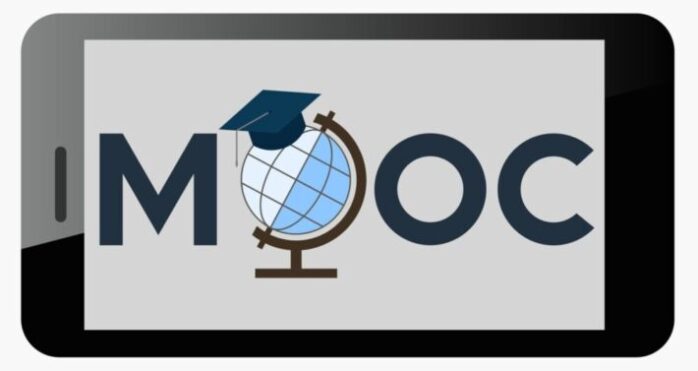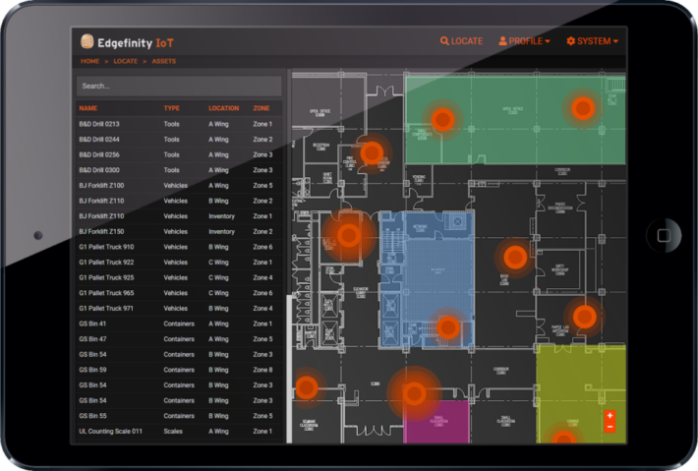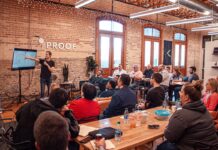
Technology is now advancing at breakneck speed. We have reached the point where increases in computing power greatly outpace our ability to fully put that computing power to use. In a sense, we don’t have time to appreciate the power of today’s computers before the next generation comes along and makes everything that came before it obsolete.
That’s why it is so important to occasionally stop, take a break, and reflect on the ways that modern technology is changing our lives.
One of the most fundamental ways that technology has changed us is by altering the way we learn.
As the world around us continues to change at an accelerating rate, we have to get better at playing catch-up, and we are!
Let’s look at some of the ways we have harnessed technological advances to become better learners.
1. MOOCS/Online learning

The most obvious way that technology has changed the learning environment is through the introduction of online learning.
Today, anybody can access courses being taught at Harvard, MIT, Cambridge, and a whole host of other universities without having to pay a penny for the privilege. For example, right now you can watch the lectures from Harvard’s introductory computer science course online completely free. If computer science doesn’t interest you, you could do a module on public health from the University of Geneva, or you can read all the lecture notes from MIT’s finance courses. All you need is a smart phone or laptop and an internet connection.
Of course, you don’t get the certificate from the institution unless you pay for it; the certification is really what you are paying for when you go to those kinds of institutions (along with the access to incredible libraries, tools, and clubs). But you do get to watch the lectures, access the notes, and see the reading lists just like real students at these institutions.
Taking free courses like this from home would have been completely unthinkable before the internet age. Not only would these courses be inaccessible to everyone outside of the city in which they were taught, but if they were accessible, they would have cost a fortune!
The unique economics of the digital age means that, increasingly, highly-valuable, specialist information will be available for everybody to access for free.
2. Bio-hacking

Another interesting way in which technology has changed the learning landscape is through bio-hacking.
Bio-hacking is the process of manipulating or augmenting your biology to bring about drastic improvements in health or performance. The majority of bio-hacking research going on today focuses on improving health and lengthening the lifespan. But a sizeable minority of bio-hackers spend much of their time trying to improve every aspect of human performance – speed, power, learning capacity, productivity, creativity, everything!
As outlined by Brian Johnson, a bio-hacking expert writing at VAGA, people have been manipulating their biology to enhance cognitive function for a long time now. Whether it is your average Joe using coffee to sharpen focus and boost energy, or it’s an intrepid bio-hacker using implants and potent nootropics to boost information processing, bio-hacking has actually been around for a while.
But one thing that is definitely a recent phenomenon is the fact that potent nootropics are now widely available to the average person.
Right now you can purchase extremely powerful, high-spec, scientifically-proven nootropics online for less than $50 for a month’s supply. The top nootropics today are extraordinarily safe (especially for the potential benefits), reliable, and effective for improving learning, information processing, and cognitive function more broadly.
3. Tracking software

One of the novel ways that we have been applying technology over the last few years is by making wearable tech that tracks various things as we go about our days.
Wearable tech – watches, wristbands, glasses, etc. – was a kind of interesting novelty a few years ago. But already, wearable tech is relatively commonplace. We have gone from viewing smart watches as a space-age marvel to something lots of us have in less than 10 years. That is incredibly fast progress!
How does wearable tech change the way we learn?
By allowing us to track our learning.
If we can accurately track our learning, we can both more accurately gauge how much work we have actually done (rather than what we assume we’ve done) across a given week. This is significant, as one of the most common impediments to learning is the propensity of people to overestimate how much studying they have actually been doing.
Ask any student in the run-up to final exams, and they’ll tell you that they’ve been doing hours upon hours of revision in the library. But if you accurately tracked the amount of time they spent studying, you’d generally find that they spent more time staring into space than actually studying. If you were able to show the student that this was the case, they would probably find it easier to focus more on the task at hand and to correct distracting avoidance behaviors.
More importantly, we can see inefficiencies in the way we’re learning and correct them in real time.
Tracking our learning allows us to see which types of learning work best for us and to prioritize them over less effective methods or practices. In doing so, we can streamline how we learn, which means we can take in more information much faster than before. If we continually refine and streamline our learning process, we will eventually reach a point where taking in, processing, and storing information becomes a very straightforward process requiring little energy.
Conversely, tracking software – as available with wearable tech and smart phones – lets us properly evaluate our learning and to find areas that do not yield any benefits. We can then cut out those learning practices that do not match our learning style.
When you stop and reflect on the ways that technology has changed the way that we learn, one thing that probably leaps out at you is the fact that you don’t utilize any of them! Start taking advantage of the many opportunities available to you today and become a better, more effective learner!











